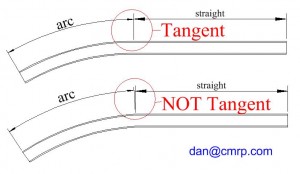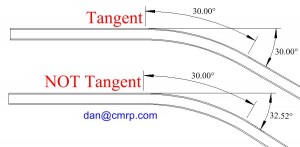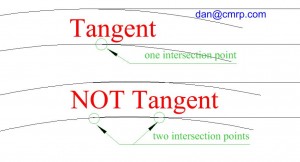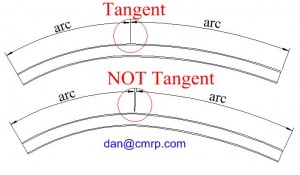Providing one or more straight tangents is a common requirement involving curved steel sections. Providing a tangent where two curved steel members meet is also sometimes required.
The question arises: how do you know when a tangent is truly tangent to a radius?
The leader lines line up
If adjacent dimension leader lines fall exactly over one another, then the adjacent arcs/lines are tangent.
If the two leader lines form an angle, then it is like having a miter cut or kink at that point.
Looking at the top part in the sketch below, the leader line for the straight portion lines up with the leader line for the adjacent arc section.
The degrees should be equal — the degrees of arc (bend) should equal the exterior angle of the two tangents
Notice here the angle between the two straight tangents at either end should equal 30 degrees, but it does not
Adjacent geometric entities only have one intersection point
All of these rules apply to adjacent geometries whether it is a curve and a straight or two curves.
Common applications of curved steel sections with straight tangents include basketball backboard supports, component parts for agricultural equipment, and monorails. Common applications for curved steel sections with two or more radiuses tangent to each other include canopies, roof supports, and ornamental iron.











